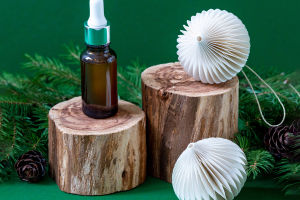Dahlias are renowned for their stunning, intricate blooms that add vibrancy and elegance to any garden.
However, successful dahlia cultivation requires more than just planting the bulbs and waiting for them to blossom.
To ensure your dahlias thrive and flourish, taking certain precautions during the planting process is essential. From site selection to post-planting care, here are some vital precautions to consider when planting dahlias.
Choose the Right Location: Selecting the appropriate location is crucial for the growth of your dahlias. They thrive in full sun, so choose a spot in your garden that receives at least six to eight hours of direct sunlight daily.
Ensure the soil is well-drained to prevent waterlogging, which can lead to root rot.
Prepare the Soil: Before planting your dahlias, prepare the soil by incorporating organic matter such as compost or aged manure. This will improve soil structure, fertility, and drainage, creating an ideal environment for dahlia growth.
Avoid planting dahlias in compacted or waterlogged soil, as it can hinder root development and lead to poor growth.
Planting Depth Matters: When planting dahlias, getting the depth right is essential. Plant the tubers about 4 to 6 inches deep and space them 18 to 24 inches apart. Planting too shallow can cause the tubers to dry out quickly, while planting too deep may delay sprouting.
Ensure the eyes (buds) of the tubers are facing upward when planting to promote healthy growth.
Provide Adequate Support: Dahlias can grow tall and produce large blooms, so providing adequate support is essential to prevent them from flopping over. Install stakes or cages when planting to support the plants as they grow.
This will help keep the stems upright and prevent them from bending or breaking under the weight of the flowers.
Water Wisely: Proper watering is critical to the health and vitality of dahlias. Water newly planted tubers thoroughly to settle the soil around them, then water consistently to keep the soil evenly moist but not waterlogged.
Avoid overhead watering, as it can increase the risk of fungal diseases. Instead, water is at the plants' base and delivers moisture directly to the roots.
Mulch for Moisture Retention: Applying a layer of organic mulch around your dahlia plants can help retain soil moisture, regulate temperature, and suppress weed growth. Mulching also provides a buffer against fluctuations in soil moisture, reducing the risk of drought stress during hot weather.
Use materials such as straw, shredded bark, or compost, and apply a layer 2 to 4 inches thick around the plants, leaving a small gap around the stems to prevent rotting.
Monitor for Pests and Diseases: Keep a close eye on your dahlia plants for signs of pests or diseases, such as aphids, slugs, powdery mildew, or botrytis. Early detection is critical to preventing infestations or outbreaks, so inspect your plants regularly and take appropriate action if any problems arise.
Consider using organic pest control methods or companion planting to deter pests naturally.
Deadhead and Prune Regularly: To encourage continuous blooming and maintain plant health, deadhead spent flowers regularly and remove any yellowing or damaged foliage. Pruning can also help improve air circulation around the plants, reducing the risk of fungal diseases.
Use clean, sharp pruners to make precise cuts and dispose of any diseased or infested plant material to prevent the spread of pathogens.
By taking these precautions when planting dahlias, you can ensure a successful growing season and enjoy a spectacular display of colorful blooms in your garden. With proper care and attention, your dahlias will reward you with their beauty and grace year after year.


